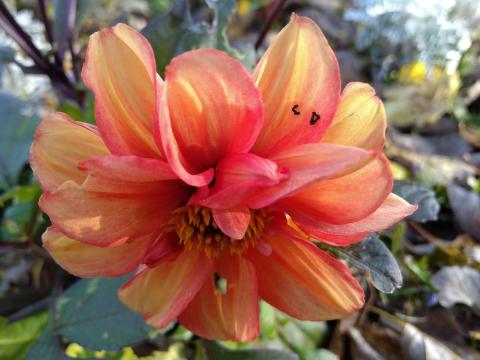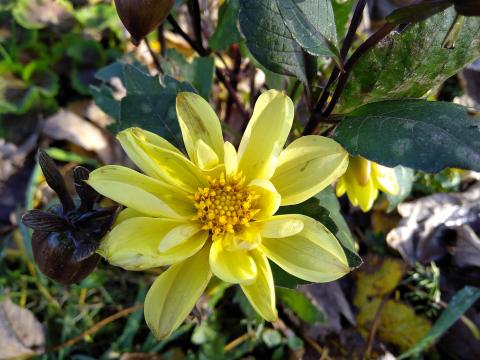Dahlia: Beautiful and Useful

Isn’t the dahlia one of the most gorgeous flowers an Englishman can grow? These pictures are of some of the plainer ones, yet they still add a riot of colour to any border or tub.
Dahlias were brought over from Mexico in the eighteenth-century and were first observed by the Spanish as they set about conquering that land 200 years before that. It’s a wonder that so beautiful a plant could grow among the brutality and destruction they unleashed. The Aztecs grew it for its usefulness rather than its beauty; the tubers were eaten and the thick stems used as domestic water piping. Food and plumbing- few things are more essential. Europeans, on the other hand, grew the dahlia entirely for its appearance.
We often distinguish items according to beauty or utility. Art we admire, but seldom consider it useful. Industrial and mechanical processes achieve important ends, but few would deem them worthy of depiction. Perhaps this is why I love architecture, from the florid designs of yesteryear to the reinforced concretes and steel of the modernism; practicality and beauty both sit in the other’s embrace. Likewise, the Bible has many passages which are trotted out at weddings and funerals, the lovely words and rhythms, especially of the Authorised Version, continuing to inspire and charm. Yet this is no mere book of poetry and abstract metaphor. It serves the very practical purpose of communicating to the spiritually dull the life-giving oracles of heaven. It exposes our sin that we may seek God’s free grace. Like the dahlia, it is both beautiful and practical.
Pleasant words are like a honeycomb, sweetness to the soul and health to the bones. Proverbs 16:24

- Log in to post comments


 Sunday Worship 10.45am & 6.00pm
Sunday Worship 10.45am & 6.00pm